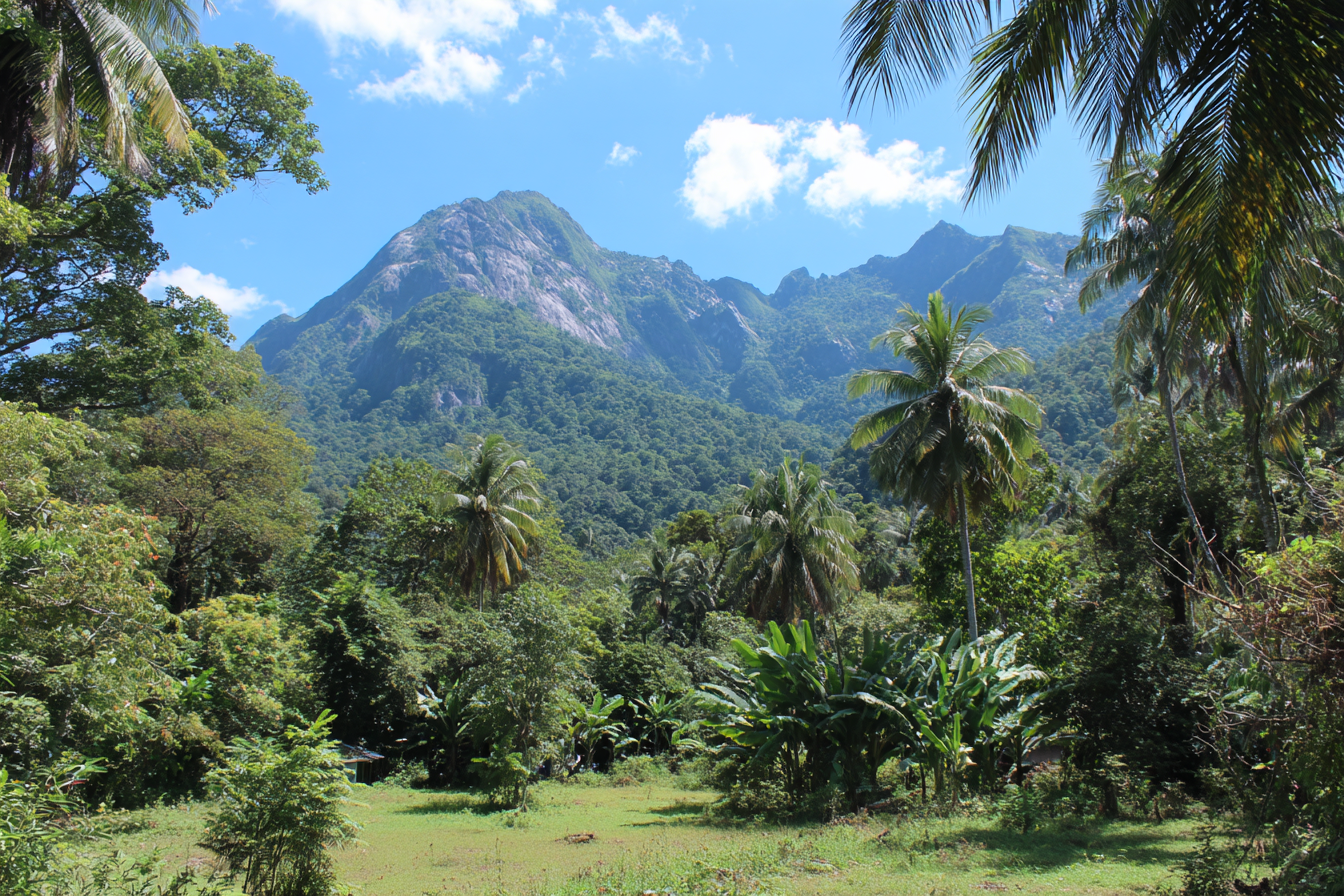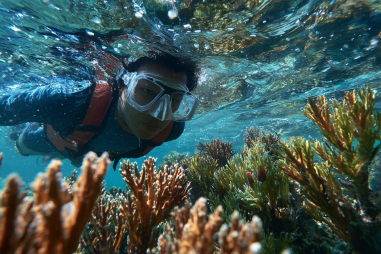Camiguin Island, known as the “Island Born of Fire,” is a gem in the Philippines that captivates visitors with its stunning natural beauty and unspoiled landscapes. Beyond its famous white sand beaches and dramatic volcanoes, Camiguin offers a haven for nature enthusiasts who seek to explore its rich biodiversity through its serene nature parks. These parks not only showcase the island’s lush flora and diverse wildlife but also provide tranquil retreats that are perfect for families, hikers, and anyone looking to immerse themselves in nature. If you’re planning a trip to Camiguin or simply want to discover more about this island’s natural treasures, exploring its nature parks is a must.
Overview of Key Parks and Reserves in Camiguin
Camiguin may be small, but it is home to several notable nature parks and reserves that reveal why it’s considered a biodiversity hotspot. Among the most popular is the Katibawasan Falls Nature Park, known for its spectacular waterfall cascading from a height of about 70 meters. This park is surrounded by dense foliage, making the setting truly magical and ideal for photography, picnics, or a refreshing dip in the cool waters.
Another significant natural attraction is the Tuasan Falls Eco-Park. This lesser-known gem offers a more intimate experience for visitors who want to escape the tourist crowds. The park preserves its pristine streams, rich vegetation, and a variety of bird species that thrive in its peaceful environment.
Additionally, the Ardent Hot Springs Nature Park is a unique spot where you can enjoy natural geothermal waters right at the foot of Mt. Hibok-Hibok. The hot springs provide health benefits and relaxation surrounded by tropical greenery.
For those interested in both flora and fauna, the Mt. Hibok-Hibok Natural Park is a must-visit. It protects over 3,000 hectares of the island’s slopes and lowlands, offering trails for trekking and birdwatching in a terrain shaped by volcanic activity. The park is a focal point for conservation and research due to its distinct ecosystem.
Wildlife and Plant Species in Camiguin’s Nature Parks
The nature parks of Camiguin showcase a diverse array of species that thrive in the island’s volcanic soil and tropical climate. Birdwatchers can delight in sightings of endemic and migratory birds such as the Camiguin hanging parrot, Philippine pitta, and various kingfishers and hornbills. The forests around Katibawasan Falls and Mt. Hibok-Hibok are especially rich in avian life.
Plants here range from towering dipterocarp trees to colorful orchids and ferns that cling to mossy logs and rocks. The setting is a living tapestry of greenery, with flowering plants adding vibrant pops of color. The island’s volcanic origins mean the soil is fertile, supporting a variety of medicinal plants and native fruit trees including lanzones, which Camiguin is famous for.
In addition to birds and plants, the rivers and streams in these parks harbor freshwater species like endemic fish and small amphibians, important indicators of ecological health. Small mammals, reptiles, and insects also contribute to the incredible biodiversity.
Activities and Facilities at Camiguin Nature Parks
Visitors to the nature parks in Camiguin can enjoy a wide range of activities designed to both entertain and educate. Hiking trails of varying difficulty abound, from leisurely strolls near waterfalls to more challenging mountain treks within Mt. Hibok-Hibok Natural Park. Guided tours are available at some parks to help visitors spot wildlife and learn about the local ecosystem.
Picnic areas and rest stops provide comfortable spaces for families to relax and enjoy the natural surroundings. Swimming is popular at Katibawasan and Tuasan Falls, where cool mountain waters offer a refreshing escape from tropical heat. At Ardent Hot Springs, dipping in the warm, sulfur-rich pools is a favored pastime for both locals and travelers looking to unwind.
Educational signages and visitor centers can be found at some parks, offering insights into the flora, fauna, and conservation initiatives. For birdwatchers, bringing binoculars can enhance the experience, and for photographers, the scenery offers countless opportunities to capture the beauty of the island’s nature.
Conservation Efforts Protecting Camiguin’s Natural Heritage
Camiguin’s nature parks are protected areas under local and national government programs dedicated to preserving the island’s remarkable ecosystems. The Mt. Hibok-Hibok Natural Park is designated as a national park, imposing measures to prevent deforestation and habitat destruction. Strict rules govern visitor behavior to minimize environmental impact, such as prohibitions on littering, collecting plants, or disturbing wildlife.
Community involvement plays a crucial role in conservation efforts. Local residents often serve as park rangers, guides, and environmental educators, fostering a sense of stewardship and pride in maintaining these natural resources. Sustainable tourism is promoted to ensure that future generations can continue to relish the island’s green spaces without jeopardizing their integrity.
Non-governmental organizations also partner with the government to conduct biodiversity assessments, reforestation projects, and wildlife monitoring programs. This collaboration helps maintain a balance between attracting visitors and preserving delicate habitats.
Visitor Information and Tips for Exploring Camiguin’s Parks
When planning a visit to Camiguin’s nature parks, it’s good to keep a few practical tips in mind to make your experience enjoyable and safe. Most parks have entrance fees that help support maintenance and conservation efforts; the fees are generally affordable but check current rates and park hours ahead of time.
Wear comfortable walking shoes suitable for uneven and sometimes slippery terrain. Bringing insect repellent and sun protection (hats, sunscreen) is highly recommended, as the parks are outdoors and tropical conditions can cause sunburn and insect bites. Don’t forget to pack water and snacks, especially if you plan to hike or spend several hours exploring.
Respect the environment by sticking to marked trails, refraining from feeding or disturbing wildlife, and disposing of trash properly. If you’re interested in guided tours or birdwatching expeditions, inquire locally as many knowledgeable guides offer these services at reasonable prices.
Finally, consider the weather when scheduling your visit. Some parks may have limited accessibility during the rainy season due to slippery paths or swollen streams.
Best Times to Visit Camiguin Nature Parks
The ideal time to experience Camiguin’s nature parks is during the dry season, which typically runs from November to May. During these months, the weather is sunny and conducive for outdoor activities such as hiking, swimming, and wildlife viewing. The clear skies also create optimal conditions for photography and sightseeing.
Peak tourist months tend to be between December and March, coinciding with the holiday season and cooler temperatures. If you prefer fewer crowds and a quieter atmosphere, consider visiting in the shoulder months of November or April-May.
The wet season, from June to October, brings more rainfall, which although it enhances the lushness of the forest, can make trails muddy and waterfalls more turbulent. However, for those who don’t mind occasional rain showers, the wet season reveals a different side of nature’s vibrancy and can be a peaceful time to visit.
Embrace the Island’s Natural Splendor
Exploring Camiguin’s nature parks offers a unique opportunity to connect deeply with the island’s natural wonders. Whether marveling at cascading waterfalls, trekking through verdant forests, soaking in rejuvenating hot springs, or spotting exotic birds, each experience encourages a greater appreciation for the environment. The island’s commitment to conservation ensures that these treasures will remain protected and accessible for generations to come.
For visitors seeking a blend of adventure, relaxation, and educational encounters with nature, Camiguin’s parks provide the perfect backdrop. By embracing responsible tourism and following simple guidelines, every traveler can help preserve the pristine beauty of this tropical paradise while creating unforgettable memories surrounded by nature’s splendor.







